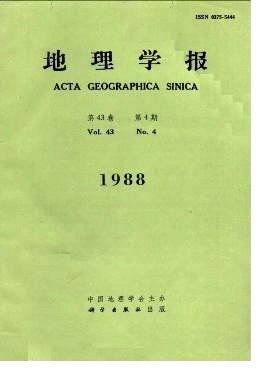Zhang Wenchang
Geographical study on passenger traffic focuses mainly on its generation, growth and distribution. This paper discusses the spatial aspect of China’s passenger traffic through its detemining factors and regional differentiations.1. Factors determining China’s passenger traffic Four factors are essential: (1) Growth of population. China’s population (excluding Taiwan) doubled during 1949-1985 while the total volume of passenger traffic increased 40.4 times. The high correlation between the two is shown by Formula 1. Meanwhile, the demand for journey varied from urban area to countryside. The average journey frequency in urban, suburb and rural areas were 17.02, 5.6 and 0.3 per capita/year respectively in 1985. (2) Emigration. Emigration forms various relationships between emigrant areas and immigrant areas and these relationships generate passenger traffic. Before 1949, the major directions of emigration were toward new developing areas such as Northeast, large cities such as Shanghai and Tianjin, and abroad. Since the founding of the People’s Republic, emigration of large scale became a planned activity. The major spatial directions of such activity can be categorized into: (a) partly relocating the existing industry to inner provinces accompanied with the relevant people, (b) sending technicians and skilled workers from coastal areas to inland areas to strengthen the development there, and (c) sending school-graduates and demobilized soldiers to remote or border areas for both political and economic reasons. (3) Urbanization. If China is divided into seven economic regions, the correlation between urbanization and passenger traffic is obvious. Northeast and East China, the urbanization level of which is higher than the national average, have more proportion of passenger traffic in national total than that of their population. Southwest China as the lowest urbanized region in the country has less proportion of passenger traffic than that of its population. (4) Economic growth. This factor has the closest correlation with the growth of passenger traffic. During 1949-1985, the GNP in China increased 16 times while the total volume of passenger traffic and the total turnover of passenger traffic increased 17 and 27 times respectively. The correlation coefficient tbetween the total passenger traffic (as dependent variable) and GNP, national population and the total length of national transportation networks (as independent variables) is very high (0.99). It is noticed in this paper that since the growth rate of passenger traffic matched that rate of the domestic consumption which decreased gradually, synchronal growth of passenger traffic with thegrowth of domestic consumption occurred in Japan and other developed countries appeared also in China. Such synchronal growth continues after 1978 when the economic reform began and the economy boomed although the growth rate of freight traffic has decreased since then. 2. Spatial differentiation of passenger traffic The modal split of transport for passenger traffic and the journey frequency per capita are analyzed. Based on the contribution of each mode of transport in passenger traffic in each of the seven economic regions, these regions are categorized into three types: (A) Land-dominating type of Northeast, North China and Northwest, (B) Land-water combination type of East China, and (C) Land-major water-minor type of South China, Southwest and Central China. As for journey frequency, 29 provincial units are regionalized into four types according to their relative distance to the national average of journey frequency per capita and average GNP per capita: (A) High-income with high mobility, (B) High income with low mobility, (C) low income with High mobility, and (D) low income with low mobility (see Map. 1). At the end of this paper, the-factors causing such a pattern is discussed.
